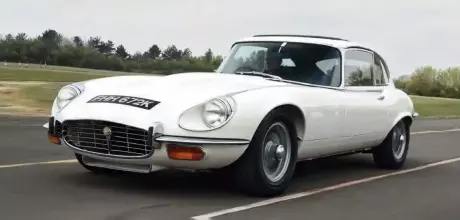We tell the story of the Jaguar E-type Series 3
Jaguar scored a hit with its first home-grown engine, the XK of 1948. But when it came to its second go, it aimed high. And the Jaguar E-type Series 3 was the first beneficiary of the new V12 unit.
WORDS: SAM SKELTON
PHOTOGRAPHY: PAUL WALTON
LAST AND FASTEST THE S3 E-TYPE STORY
THIRD ALBUM E-TYPE SERIES 3 HISTORY
We tell the story of the last iteration of the E-type.
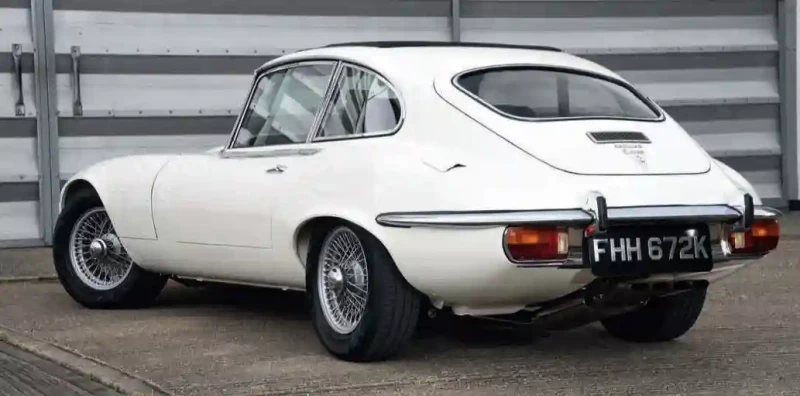
There seem to be two types of Jaguar E-type enthusiast. There are those who think the V12 is an abomination – too soft, too comfortable, too big and too lazy; an embodiment of how the 1970s spoiled everything. And there are those who love every inch of it – flared arches to match the era’s trousers, a thumping great engine, and space to bring the family along to boot. The topic of the Series 3 is one where few feel truly ambivalent, but one thing that few can deny is that it’s easily the best value car ever to wear the E-type badge. And it was a coup – outside of Italian exotics such as Ferrari and Lamborghini, a V12 engine was the thing of playground whispering. And for those who saw the E-type as the ultimate Top Trumps card, surely a V12 could only make things better still?
“These are still the rarest E-types produced, at just 21% of total production.”
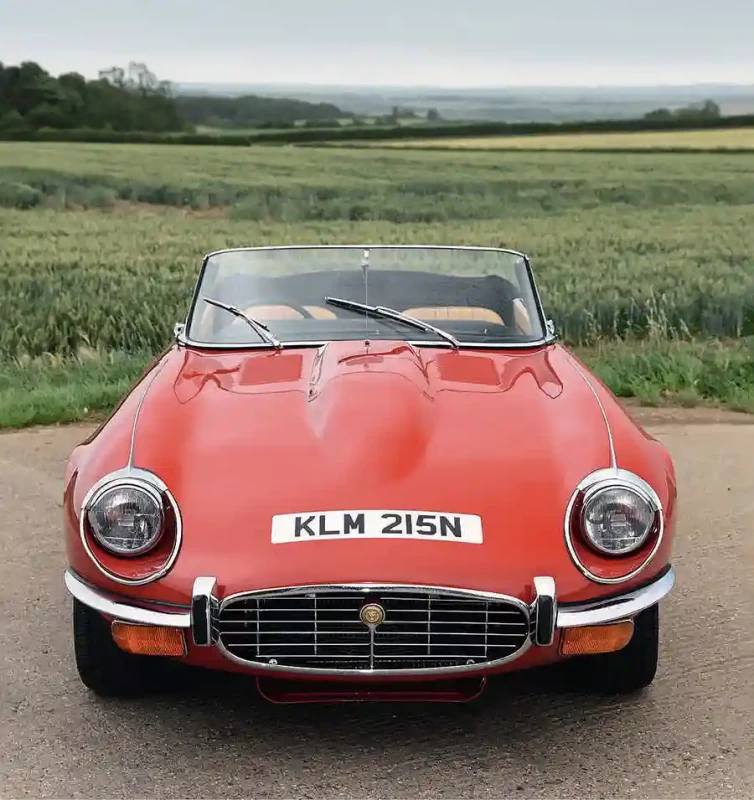
The E-type’s contemporaries were, after all, developing bigger ambitions of their own. The Mercedes-Benz SL would abandon the six pots with which It had seen out the 1960s in favour of a V8 for the new R107 of 1971, Aston Martin had already developed a V8, and Anglo-Italian hybrids with American V8s such as the Gordon-Keeble and Jensen Interceptor had made the XK’s statistics seem somewhat lacking.
“The E-type now sat on the 2+2’s longer wheelbase as standard, both in coupe and roadster form.”
Jaguar had planned for a new sports car project entering the 1970s – the XJ21 project. This would have been based on a shortened XJ floorpan and used the new V12 engine that Jaguar was developing for its saloon cars. But Sir William Lyons wanted a true GT car, and this project was ultimately shelved in favour of the XJ27 – the car that would become the XJ-S. But that car wouldn’t be ready until 1975. The only solution was to keep the E-type in production – and to use that as the testbed for the new V12 engine.
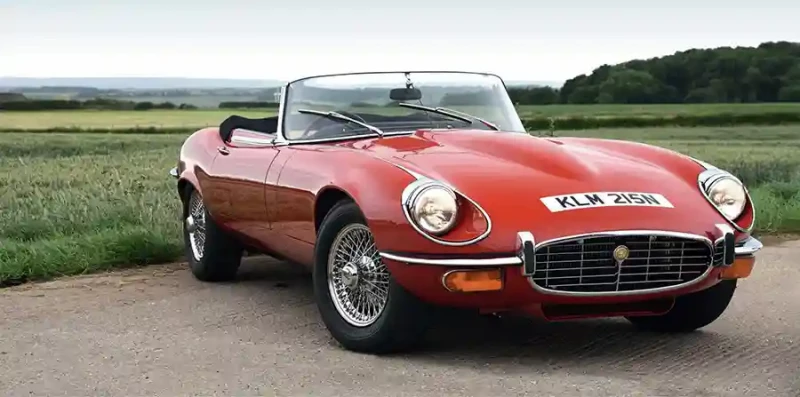
Not that this would be easy. The American market, so crucial to Jaguar, wanted more refinements – a softer ride, more room, air conditioning. Jaguar’s Lofty England told author Philip Porter exactly why the XJ-S was the direction that the company would have to take. “One of the biggest failings of the E-type was the fact that you hadn’t got enough room in the scuttle to get a decent air conditioning set up in there, which is pretty vital.
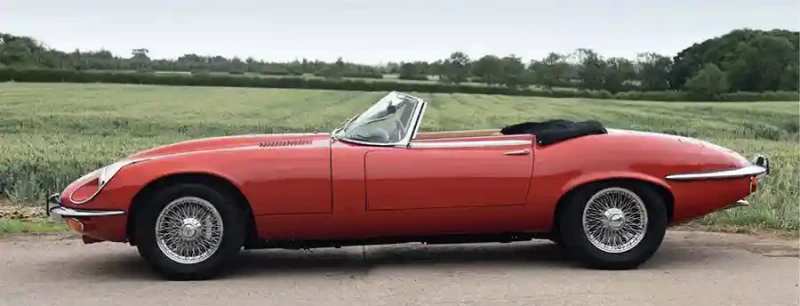
People say ‘why didn’t you repeat the E-type?’ Well, there ain’t much room in the cockpit area. There isn’t much room to have a volume of air in the car, or any elbow room… Traffic is now so appalling and you spend half your time sitting in a traffic jam. If you’re sitting in traffic, you need some room to move and you need a proper, decent air conditioning system.”
William Heynes was the man behind the ultimate decision to put the V12 into the E-type as a way to bridge the gap. It had been intended for the saloon, but trialling it in the E-type felt like a sensible decision in order to prevent the saloon earning an unreliability reputation if the new engine suffered teething troubles. For this reason, it was originally intended that the V12 should be part of a wider Series 3 range, whereby the 4.2 would also be made available.
“With six cylinder models technically listed in Jaguar price lists but never chosen, the V12 is the Series 3 that E-type enthusiasts remember best.”
The E-type V12 project soon earned itself the XJ25 name, and the first running prototype was completed in 1969. 87 production cars were built the following year ahead of a 1971 launch.

And at that launch, in March 1971, the claimed power output was 314bhp SAE – more than any XK could ever achieve – courtesy of four Stromberg 175CD carburettors. However, privately, Jaguar admitted that the DIN power figure was more like 272bhp; still the most powerful E-type and still the fastest in a straight line, but not such an impressive hike over the 3.8 as casual bystanders might have expected. 0-60 in 6.5 seconds is fast even today, but when the by then ten-year-old 3.8 could do it in 7 it seemed almost slow.
And while the acceleration was better, Motor’s test in November 1971 reported a top speed of 146mph – 3 less than the original 3.8. The reason? Weight. The E-type now sat on the 2+2’s longer wheelbase as standard, both in coupe and roadster form, and with the roadster weighing an extra 250kg over the Series 1, performance was always going to suffer. Especially given how many of the new model would be fitted with the Borg-Warner 12J three speed auto, not the four speed manual.
The 2+2 platform added nine inches to the E-type’s length, while the 4.5” gain in front track and 3” gain in rear track were disguised with flared arches. A new XJ6 style chrome grille was fitted in the air intake, and as standard the car sat on steel wheels with hubcaps rather than wires. To make light work of the track increase, power steering – and upgraded brakes – were now standard fitment. Still good value at £3139 for the roadster and £3386 for the coupe, the E-type was cheaper than the Porsche 911 by 10% and just a third of the price of the closest equivalent from Ferrari.
Contemporary road testers had mixed feelings. Motor Sport’s Denis Jenkinson tested the car with part of his mind on his own Series 2 E-type. “Sitting in the V12 the only obvious changes are a rev-counter red-lined at 6,500 r.p.m. and the smaller-diameter steering wheel, which is dished and has a leather-covered rim. Starting the engine does little to change the scene for it ticks over at 600-700 r.p.m. just like the six-cylinder, but a prod on the throttle pedal makes the tacho flick up in a much more lively fashion. The view through the windscreen remains unchanged so that ambling quietly along waiting for the oil and water to warm up, you would not know you were driving anything but a normal 4.2- litre six-cylinder ‘E’-type.” He wasn’t a fan of the idea of an automatic, feeling the ratios limited and the car unwilling to do as he wanted, but found the four speed as good as the one in the older car. However, it was in sheer acceleration that the car made the most sense. “In the 70-110 m.p.h. range it really did come into its own.
My reflexes and judgement being well attuned to E-type performance in this speed range I soon found that the V12 did not need anything like the time and space I was subconsciously allowing for overtaking, which made me realise how rapidly it was accelerating, making it an even safer and more longlegged car than the old six-cylinder.”
The refinement of the V12 also came in for praise, though what was more interesting about Jenkinson’s review was the acknowledgement of the existence of a six cylinder Series 3 model. “As the 4.2-litre XK six-cylinder engine is still available in the new Series 3 E-type, although you only save £256 and gain about 3 miles per gallon, it was interesting to look at a six-cylinder version. The engine looked almost lost in the V12 space. However, Jaguar have taken advantage of the extra space to redesign the oil filter layout, and it now hangs downwards on the right side of the crankcase instead of sticking out at right-angles and anyone who has had occasion to change an E-type oil filter element will know what I mean when I say I gave three hearty cheers.” Unfortunately with only six believed to have been built, Jenkinson’s report has doubtless been read by many more people than ever got the opportunity to sample a six pot!
With six cylinder models technically listed in Jaguar price lists but never chosen, the V12 is the Series 3 that E-type enthusiasts remember best. But it was produced through one of Jaguar’s most difficult eras. In June 1972, a ten week strike crippled the Browns Lane factory. The dispute – over pay and the abolition of piecework – not only delayed production of the new saloon but also prevented the dispatch of spare parts to Jaguar’s dealer network.
This strike also effectively sabotaged the July launch of the XJ12 saloon, a car that was meant to sit at the top of the Jaguar range and which shared the E-type’s V12 powerplant. After 10 weeks, and an estimated loss of £21,000,000 in production, the dispute was ended. But with a total of thirteen weeks’ stoppages production had been low, and morale damages by the retirement of both Sir William Lyons and Walter Hassan.
There was more bad news around the corner. While Jaguar was less affected by the energy crisis of the early 1970s than many manufacturers owing to its full order books, there was a knock-on effect leading into 1974. The introduction of the 3 day week on New Year’s Day 1974 as a result of coal strikes also had the effect of reducing production capacity. And 1974 would prove to be the end for the E-type – late in 1973 the Coupe had been discontinued owing to American legislation about internal roll hoops to have been enacted from 1974, and with the likelihood of severe restrictions on convertibles looming it was clear the car’s days were numbered. Not only that, but the E-type’s fuel tank couldn’t be adapted to suit 30mph rear impact regulations from 1976. The car had almost assumed pariah status in America as a result by 1974 and because production had remained steady, there were still several cars unsold in dealerships. The final American models would unsightly 5mph impact overriders atop their chrome bumpers, and the final E-type would be produced in September 1974. However, owing to the size of its unsold stockholding, Jaguar delayed the announcement until February 1975 – supplying customer orders in the interim from stock.
Seven months later, the XJ-S was introduced – felt by many to be a successor to the E-type, it was in fact a wholly different type of car. The E-type had begun life as a lissom and powerful sports car, evolving into a grand tourer at the end of its life to meet market expectations and to accommodate its new engine. The XJ-S had come the other way; starting life as an XJ12 SWB before being cut down and reclothed in a daring and up to the minute new shell. It should come as no surprise that the new model, then, had a completely different character to that of the car that it was felt to have replaced, and it is no fault of the XJ-S that any comparisons over the years have been unfavourable to the newer machine. This was a car targeted not at the E-type buyer but at the Jensen Interceptor and BMW 3.0CS market. Crucially, it was a car designed to meet the needs of the American market, something the E-type could no longer achieve.
In its 3.5 year production life Jaguar produced 7982 E-type Series 3 roadsters. The fixed head, which was produced for just 2.5 years, achieved a total of 7310 – totalling 15,292 cars. While similar to the total production if the early 3.8-litre model over a similar time frame and indicative that E-type desirability didn’t tail off too far before that last year or so of production, these are still the rarest E-types produced at just 21% of total production and – through lower values making full restoration in the 1990s unviable – remain the rarest models today.
And those lower values when compared to the earlier models conversely have made them among the most widely experienced E-types, as their values have made them a more attainable prospect for many would-be owners. While they have been dismissed over the years as the least desirable model, the fact remains that they were also the most powerful and fastest E-types, even if they were targeted at a different market to those early cars from 1961. And today, while the market hasn’t turned completely, something interesting is certainly happening. Because now, the V12s have a following all of their own – and they’re no longer the cheapest way into E-type ownership. What has long been seen as the “clever money” option has finally come good – with Series 2 2+2s now offering the best value route into E-type ownership and as such showing that the V12s are now revered for what they are.
The legacy of these cars is a simple one. They held the E-type flag high when it was already becoming an elderly design, they kept Jaguar in the GT game for long enough to develop the XJ-S, they served as a vital testbed for a new engine upon which Jaguar would pin its saloon car hopes and – crucially – with their flared arches, chrome grilles and longer bodies, they opened up the E-type experience to a different sector of an evolving market. Even now, there are people who think the original Series 1 is less than perfect, who think the wheels are hidden away, the nose a little pinched, and the values inflated. The Series 3 brought the E-type to them. And it’s perhaps fair to say that by broadening the appeal of an already attractive car, the very existence of the Series 3 E-type is what makes the Jaguar E-type Britain’s favourite classic car.


